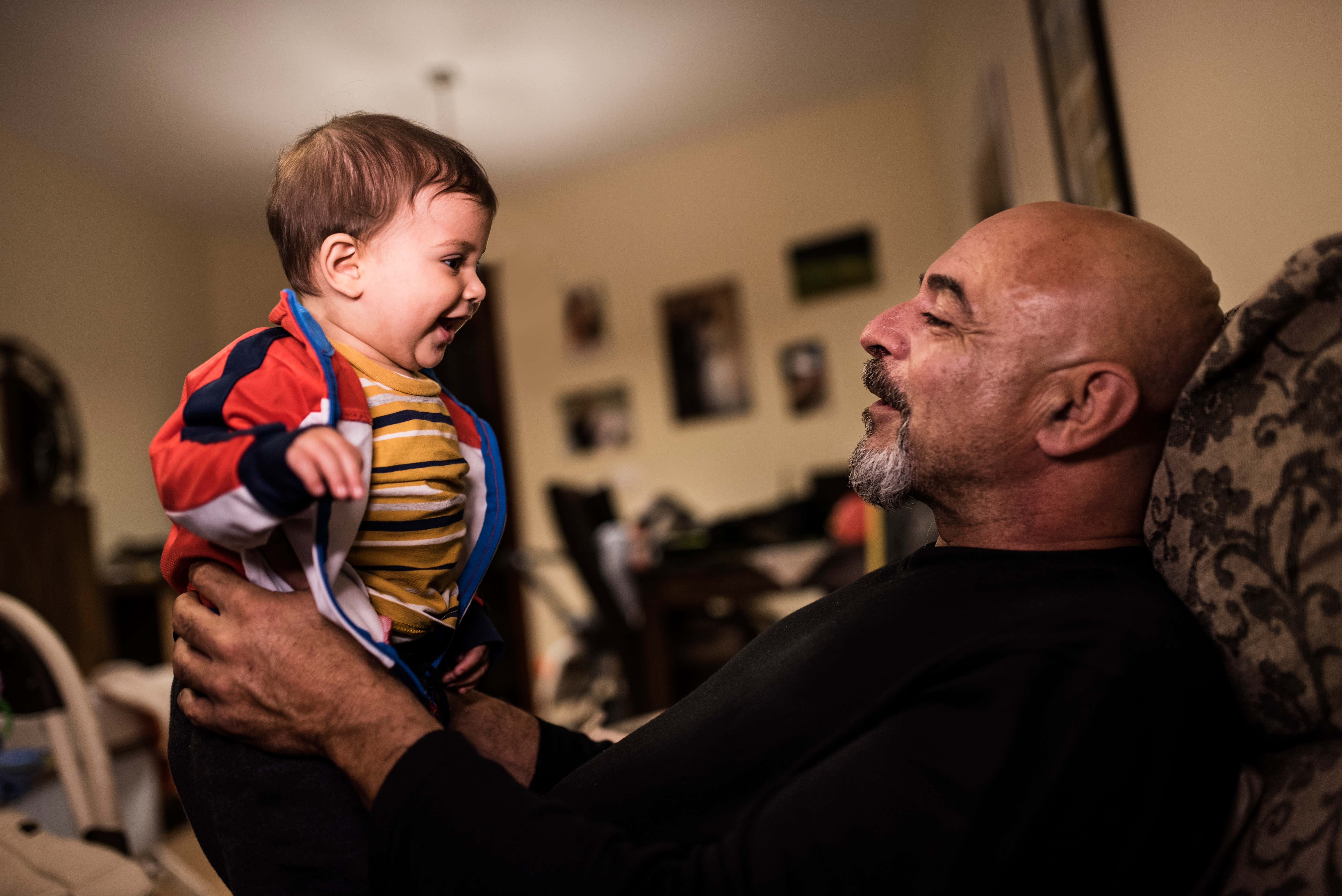Bladder Cancer

The startling discovery of blood in the urine is what causes most people with bladder cancer to seek medical advice. Early symptoms of bladder cancer, such as needing to urinate more frequently or experiencing pain while urinating, may also be indicative of more benign issues, such as a urinary tract infection. And while even blood in the urine can point to something else, such as kidney stones, it is important to get it checked out as soon as you experience any changes in your bladder habits. After all, identifying bladder cancer as early as possible can have a significant impact on your outlook and treatment.

البروستاتا عبارة عن غدة بحجم حبة الجوز تقريبًا، غالبًا ما تكون أكبر عند الرجال الأكبر سنًا، تقع بين القضيب والمثانة. تقوم بإنتاج السائل المنوي الذي ينتقل بعد ذلك عبر مجرى البول الذي يمر عبر مركزها.
يحدث سرطان البروستاتا عندما تتحور الخلايا الطبيعية داخل البروستاتا وتبدأ في النمو بطريقة لا يمكن السيطرة عليها. في بعض الأحيان، يمكن أن تخرج خلايا السرطان من البروستاتا وتنتشر إلى أجزاء أخرى من الجسم. يقوم الأطباء بالتمييز بين أنواع سرطان البروستاتا المختلفة كالآتي:
سرطان البروستاتا الموضعي: يقتصر نمو السرطان على غدة البروستاتا ولا ينتشر إلى أجزاء أخرى من الجسم. يمكن أن تختلف سرعة نمو السرطان وانتشاره من شخص لآخر.
سرطان البروستاتا المتقدم موضعيًا: ينتشر السرطان خارج غدة البروستاتا إلى المنطقة (المناطق) المحيطة مباشرة.
سرطان البروستاتا النقيلي: ينتشر السرطان إلى أجزاء أخرى من الجسم ولم يعد من الممكن شفائه.
There are multiple types of bladder cancer, some rarer than others:
- Urothelial Carcinoma may be caused by gene changes within cells of the urinary bladder. These cells sometimes develop in your kidneys or in tubes that connect the entire urinary tract. Accounting for approximately 90% of all bladder cancers, this type is the most common form of bladder cancer and usually begins as a superficial form but can become invasive when left untreated.
- Squamous Cell Carcinoma is invasive and caused by microscopic, flat cells. It is a much rarer form of bladder cancer, making up 10% of global cases. It is linked to chronic bladder irritation, such as from using a catheter for long periods, or from a specific parasitic infection that is most commonly found in Africa.
- Adenocarcinoma is invasive and one of the rarest forms of bladder cancer, making up just 1-2% of all cases.12 This type starts in mucus glands that are in the tissue that surrounds all of your organs, including your bladder.12
- Small Cell Carcinoma is invasive, rare and begins in nerve-like cells in your bladder. This form can grow extremely quickly and will need a speedy treatment plan.
- Sarcomas are the rarest forms of bladder cancer. This type starts in the muscle of the bladder, as opposed to the organ’s lining. Sarcomas may require different types of treatment.12
There are varying stages of bladder cancer, which will determine your prognosis and treatment plan.13 Stages 0 and 1 are considered to be NMIBC (non-muscle-invasive bladder cancer), while stages 2 and 3 are MIBC (muscle-invasive bladder cancer).14 Stage 4 is considered to be metastatic bladder cancer. Which type, and stage, you have can be determined based on the depth by which the tumour has spread.14
Stage 0 | Stage I | Stage II | Stage III | Stage IV |
|---|---|---|---|---|
Stage 0 The cancer has not reached beyond the inner lining of your bladder. | Stage I The cancer has grown to the connective tissue between the inner lining and bladder muscle, but has not spread to the rest of the organ or the rest of your body. | Stage II The cancer has grown into the bladder muscle, but has not reached the tissue surrounding the outside of your bladder. | Stage III The cancer has grown outside of the bladder, and close to organs such as the prostate or uterus, or a lymph node, but has not spread beyond the abdomen. | Stage IV The cancer has spread outside the bladder into other areas of the body. |
What are the symptoms of Bladder Cancer?
While symptoms can vary depending on the stage of the disease, there are a few that are more common indicators of bladder cancer and should not be ignored. These include:15
- Abdominal and lower back pain
- Blood in urine
- Frequent urination
- Painful urination
Additionally, patients may experience weight loss or fatigue.16 If you are experiencing any of these symptoms, your doctor may recommend a series of tests. This may include testing a urine sample for signs of blood, cancerous cells, or other substances commonly found in those with bladder cancer.17 Your doctor may also require a CT scan to see if there are any visual signs of cancer.18
Another common test is called a cystoscopy, in which a urologist will use a thin tube with a camera at the end to inspect the urinary tract and bladder for signs of cancer. If the urologist finds an abnormal area, they will take a small tissue sample, a procedure also known as TURBT (transurethral resection of bladder tumour), to determine whether it is cancer, and how invasive it is.18
How common is Bladder Cancer?
Bladder cancer is the 10th most common cancer worldwide. Among all cancers, it is the 6th most common cancer among men and the 17th most common cancer among women.19 Overall, there are roughly 550,000 new cases of bladder cancer globally each year.20 In 2020, Europe accounted for slightly more than 200,000 cases in men and women combined — roughly 35% of all new cases in the world.21 However, its commonality is also matched by its survival rate. Around 77% of those with bladder cancer survive at least five years after their diagnosis, depending on the type of cancer and the stage in which it is discovered.22
Along with gender, there are risk factors that can make bladder cancer more likely to develop, including:
- Smoking: Smoking is the single biggest risk factor associated with bladder cancer, accounting for an estimated 40–70 per cent of all cases.23
- Exposure to chemicals: Exposure to certain industrial chemicals is another risk factor, accounting for around 25 per cent of cases.24
- Age: Bladder cancer is more common in people over the age of 55.23 Each year, almost 6 in 10 (56%) of all new bladder cancer cases in the UK are diagnosed in people aged 75 and over.25
- Gender: Bladder cancer is more common in men than in women.26
- Other risk factors include radiotherapy, previous treatment with certain chemotherapies, having diabetes, having an indwelling catheter, long-term urinary tract infections, bladder stones, early menopause and schistosomiasis.24
Treatment and Care
There are several bladder cancer treatments available that vary based on the stage of your cancer.27 While bladder cancer has a varying prognosis based on stage,22 recurrences are not uncommon.28 Regular screenings are recommended to ensure the cancer has not returned.27
- Surgeryis a common option if you have superficial, early-stage bladder cancer, because the affected tissue is usually confined to one specific area.29 Surgeons will either remove sections of your bladder or use a small tool to eliminate the tumours, leaving the remaining healthy tissue intact.30 In more advanced cases, your entire bladder will need to be removed. In this procedure, called a radical cystectomy, sexual organs, such as the prostate and organs that produce semen, and the fallopian tubes, womb and part of the vagina, will also need to be removed.30 After your bladder is removed, the surgeon will create a new way for urine to be passed, which means using a small urine collection bag, a catheter, or creating a new bladder from parts of the intestine.30
- Immunotherapy is a common cancer treatment, using treatments to help your body’s immune system track down the cancerous cells and destroy them.29
- Radiation Therapy uses radiation to destroy bladder cancer tumours. It may be used to eliminate any cancerous cells that have remained after or were not possible to remove during surgery.23
- Chemotherapy can be administered intravenously, as a pill or, using a catheter (intravesical) inserted into the urethra to deliver a combination of medicines aimed at killing cancerous cells.29
- Chemo-radiation is the combination of chemotherapy and radiotherapy to treat cancer.18
Along with these treatments, ask your doctor if clinical trials are available and whether you may qualify to participate.
Living with Bladder Cancer
The emotional and physical shock of a cancer diagnosis can be incredibly difficult to handle. It can be scary or even incite anger, and it’s important to understand that these emotions are normal, expected, and acceptable. Do not forget, treating your bladder cancer is not just about surgery or medications, it’s about finding the right emotional support as well.15
Many of those diagnosed with, and treated for, bladder cancer often continue to live normal lives. However, treatments can cause significant changes to your lifestyle, which may cause emotional distress and bring a period of adjustment – both physically and mentally. For some patients, it may be learning how to live with a hidden urine bag, for others, how to use a catheter. These changes may affect your social life, your intimate relations and how you perceive your own body.15 Find someone who can talk through these emotions with you and be open with your friends and family members about how you are feeling.
One way to overcome the changes that may seem forced on you is to embrace the changes you can decide to take on your own, starting with a healthy lifestyle. Quitting smoking, reducing alcohol, eating balanced meals and getting exercise are all ways not only to strengthen your body but to reinforce your mind and take some control of your life.31
It is important, however, that if you experience adverse events, especially in later stages of the disease, you should notify your doctor immediately, because your doctor may be able to help by adjusting dosage or supportive care.
What to ask your doctor?
The list below includes example questions to help start a conversation with your health care provider. There may be other relevant questions based on your symptoms, stage, and medical history that are not listed here.
- How can I distinguish bladder cancer from a urinary tract infection or kidney stone?
- What is my stage of bladder cancer?
- Has the cancer spread beyond the bladder?
- What do different stages of bladder cancer look like?
- How much does family history determine my chances of developing bladder cancer?
- What are my treatment options?
- What about personalized medicine?
- How will my treatments affect my daily life?
- If my bladder is removed, what are my options for passing urine? What are the pros and cons of each?
- Will my bladder cancer or my treatment hinder my sex life?
- How often do I need to be tested for bladder cancer after surgery?
- How will we know if the cancer has come back? What should I watch for?
- ...
Janssen & Bladder Cancer
In Europe, bladder cancer is the 5th most common cancer, and it is estimated that by the year 2030, around 219,000 people will be diagnosed across Europe each year.32
People living with the advanced stages of the disease often face poor outcomes, with a 35% and 5% survival rate over five years in locally advanced and metastatic UC patients, respectively.33 This means there is a high unmet need for new treatment options in this space.23 At Janssen, we are embracing this challenge.
There is strong scientific evidence to show that the earlier the diagnosis of bladder cancer, the better the prognosis is for patients.34
We are focusing on better understanding the drivers of urothelial cancer, the most common type of bladder cancer,32 and we are exploring targeted therapies – alone and in combination – to improve patients’ expected outcomes as a result of their treatment.
Glossary
- Urologist: Surgeon who specializes in treating diseases of the urinary system and the reproductive system.35
- Urothelial cells: Cells found in the inner lining of the bladder.
- Urothelium: The inner lining of the bladder.
- Catheter: A tube inserted into the bladder through the urethra.36
- Urethra: The tube through which urine is passed.
- Cystoscope: A thin, flexible tube with a camera or light at the end used to inspect the bladder for cancer.37
- Dysuria: Pain felt when urinating.38
- Urinary Tract: The organs and tubes used in the urinary system, including kidneys, bladder, and urethra.
- Haematuria: Blood in the urine.39
Patient advocacy groups and external sources
This website is developed exclusively by Janssen Pharmaceutica NV. Please note that the patient advocacy groups, and external sources listed below are an additional and independent source of information you might find useful. These groups and sources were not involved in the creation of this website and do not endorse its content in any way.

The World Bladder Cancer Patient Coalition promotes bladder cancer awareness, unites those with the disease to create support groups, and engages in advocacy for new medical research.

Action Bladder Cancer UK engages the public in awareness campaigns around this disease, identifies new research areas, and offers support to patients and their loved ones.